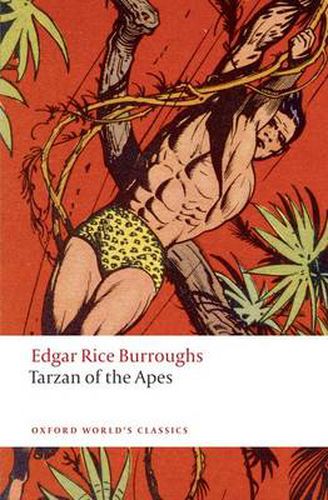Readings Newsletter
Become a Readings Member to make your shopping experience even easier.
Sign in or sign up for free!
You’re not far away from qualifying for FREE standard shipping within Australia
You’ve qualified for FREE standard shipping within Australia
The cart is loading…






Tarzan first came swinging through the jungle in the pages of a pulp-fiction magazine in 1912, and subsequently in the novel that went on to spawn numerous film and other adaptations. In its pages we find Tarzan’s origins: how he is orphaned after his parents are marooned and killed on the coast of West Africa, and is adopted by an ape-mother. He grows up to become a model of physical strength and natural prowess, and eventually leader of his tribe. When he encounters a group of white Europeans, and rescues Jane Porter from a marauding ape, he finds love, and must choose between the values of the jungle and civilization.
The Tarzan of popular imagination bears only limited resemblance to Edgar Rice Burroughs’s creation, and the complex backdrop of colonial appropriation, literary heritage, and nostalgic yearning from which he emerged. This new edition considers these contexts, as well as the enduring appeal of the King of the Apes.
$9.00 standard shipping within Australia
FREE standard shipping within Australia for orders over $100.00
Express & International shipping calculated at checkout
Tarzan first came swinging through the jungle in the pages of a pulp-fiction magazine in 1912, and subsequently in the novel that went on to spawn numerous film and other adaptations. In its pages we find Tarzan’s origins: how he is orphaned after his parents are marooned and killed on the coast of West Africa, and is adopted by an ape-mother. He grows up to become a model of physical strength and natural prowess, and eventually leader of his tribe. When he encounters a group of white Europeans, and rescues Jane Porter from a marauding ape, he finds love, and must choose between the values of the jungle and civilization.
The Tarzan of popular imagination bears only limited resemblance to Edgar Rice Burroughs’s creation, and the complex backdrop of colonial appropriation, literary heritage, and nostalgic yearning from which he emerged. This new edition considers these contexts, as well as the enduring appeal of the King of the Apes.